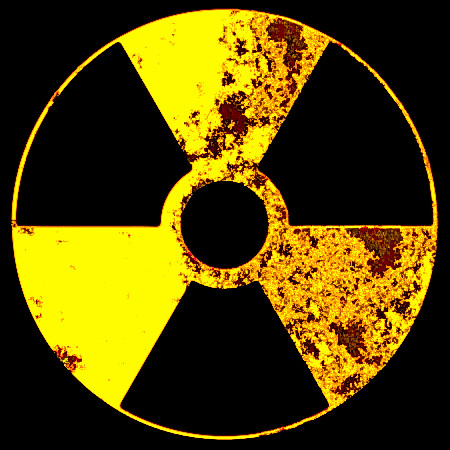Nuclear Power

“Nuclear Energy Atomic Energy” by Sakucae is licensed under CC BY-SA 2.0
What is Nuclear Power?
Nuclear Power was first developed in 1935 by Enrico Fermi. He discovered that nuclear power occurs when a radioactive substance, such as Uranium, is swarmed by neutrons. The radioactive substance produces something that is not Uranium, and is lighter than the product was before it was swarmed by neutrons. Nuclear Power is one of the cleanest uses of power because it produces zero emissions. Nuclear power comes from splitting atoms such as Uranium, in a reactor to heat water and then make steam. Nuclear Power costs about $9 billion dollars per year, but even though it is very expensive it is also the most reliable source of power.
Is Nuclear Energy clean?
Nuclear power is the largest source of clean energy in the United States. Nuclear Energy is clean because it produces zero emissions and doesn’t use any carbon based emissions. Nuclear Energy reactors use uranium instead of fossil fuels because of that the air is cleaner and we still get energy. As of 2014, nuclear energy has 4 times as much carbon free power as wind and solar combined.
How is Nuclear Energy made?
Nuclear Energy is made by splitting atoms in a reactor to heat water into steam. This process is called Nuclear Fission. The steam that is produced from the Fission process is used by a turbine generator to generate electricity. The process to make Nuclear energy starts with the cool water going into the condenser. Then the condensed water flows into the reactor vessel with the control rods and goes through the fission process. The steam goes into the turbine which empties the hot water back into the lakes and rivers. Meanwhile the energy that was in the turbine goes into the generator which then goes into the transmission lines that feed into our houses and appliances.
Nuclear Bomb
The invention of the Nuclear bomb was made in in Berlin, Germany, in 1938. After Otto Hahn, Lise Meitner and Fritz Strassman discovered nuclear fission, this made the first atomic bomb possible. The world’s first nuclear weapons test was on July 16, 1945, in New Mexico.
Problems with Nuclear Energy
There can be complications with nuclear energy. Some of these complications are meltdowns and accidents at nuclear power plants, nuclear waste, and natural disasters that affect the stability of the nuclear power plants. One of the biggest meltdowns / accidents was the 1979 Three-Mile Island accident in Pennsylvania. This was caused by a cooling malfunction. The meltdown released dangerous radioactive gasses into the atmosphere which resulted in the U.S. never building another nuclear power plant. The main source of nuclear energy is Uranium. The problem with Uranium is that it takes about seven hundred million years to lose half of its radioactivity. The reason Uranium needs to only have half of its energy is because it won’t split until it has less energy. The splitting of Uranium is needed to create nuclear energy so this makes it a needed but limited resource.
Nuclear Disasters
There are some very important Nuclear Disasters that people should be aware of. For example, in Fukushima, Japan, March 11, 2011, an earthquake followed by a tsunami hit northeastern Japan, causing a dreadful accident at the Fukushima Daiichi nuclear power plant on the coast of Japan. The accident cut off external power to the reactors which then doubled the amount of radioactivity of which the plant was able to withstand.
Conclusion
Nuclear power comes from splitting atoms, such as Uranium, in a reactor to heat water and then make steam. Nuclear Energy is clean because it produces zero emissions and doesn’t use any carbon based emissions. People from Germany discovered nuclear fission, this made the first atomic bomb possible. There are potential complications with nuclear energy including meltdowns and accidents, nuclear waste, and natural disasters like seen in Fukushima, Japan, which was a nuclear disaster caused by an earthquake and a tsunami. The tsunami disabled the cooling system of three Fukushima Daiichi reactors, causing a nuclear accident. In my opinion, nuclear energy is one of the best types of energy.
Related Stories & Citations
“What Is Nuclear Energy?” Nuclear Energy Institute, www.nei.org/fundamentals/what-is-nuclear-energy.
“Nuclear Energy.” Greenpeace USA, www.greenpeace.org/usa/global-warming/issues/nuclear/.
“Javascript Required!” Nuclear Power Today | Nuclear Energy – World Nuclear Association, www.world-nuclear.org/information-library/current-and-future-generation/nuclear-power-in-the-world-today.aspx.
“Nuclear – ClearPath.” ClearPath, clearpath.org/policy/nuclear/.
“Nuclear power.” Britannica School, Encyclopædia Britannica, 5 Jul. 2018. school.eb.com/levels/high/article/nuclear-power/600414. Accessed 28 Apr. 2019.
“Chernobyl disaster.” Britannica School, Encyclopædia Britannica, 18 Apr. 2019. school.eb.com/levels/high/article/Chernobyl-disaster/23843. Accessed 7 May. 2019
“Nuclear Energy – How Energy Works.” Duke Energy, www.duke-energy.com/energy-education/how-energy-works/nuclear-power.
“Fukushima Daiichi Accident.” Fukushima Daiichi Accident – World Nuclear Association, www.world-nuclear.org/information-library/safety-and-security/safety-of-plants/fukushima-accident.aspx.
Editors, History.com. “Three Mile Island.” History.com, A&E Television Networks, 18 Dec. 2009, www.history.com/topics/1970s/three-mile-island.
“Three Mile Island Accident.” Three Mile Island | TMI 2 |Three Mile Island Accident. – World Nuclear Association, www.world-nuclear.org/information-library/safety-and-security/safety-of-plants/three-mile-island-accident.aspx.










